How to measure heat correctly, according to scientists, and why it matters
As recent fervor for storm chasing and the national pastime of doubting meteorological predictions demonstrates, weather can be a tricky beast to pin down. To truly wrangle it and capture its data, you have to have the correct tools in the best location at the right time, and you also need someone who knows exactly what they're looking at.
All of this remains true for the invisible, slow-creeping monster of heat, which the U.S. Federal Emergency Management Agency doesn't officially recognize as weather capable of becoming a "major disaster," despite acknowledging on its website that "extreme heat often results in the highest annual number of deaths among all weather-related disasters."
In Phoenix, America's hottest big city, residents who regularly witness elderly, unhoused and lower-income individuals struggling to cope with heat extremes on sidewalks and at bus stops and in parks each summer, know this already. Arizona Governor Katie Hobbs and Phoenix Mayor Kate Gallego know this. Both appointed heat officers to lead their jurisdictions' responses to skyrocketing deaths, with some successes and some areas for improvement. (The Arizona Republic, part of the USA TODAY Network, has routinely questioned these offices' effectiveness, levels of investment and commitment to addressing the cause to help hold them accountable.)
And Kris Mayes, the Arizona Attorney General who in July led 13 other attorneys general in asking FEMA to recognize extreme heat as eligible for federal disaster recovery funds, knows this.
“In 2022, Arizona recorded 1,030 deaths related to or caused by heat statewide, as well as over 4,000 hospital or emergency room visits for heat-related illness,” Mayes said in a July 16 statement. "Updating FEMA's regulations to include these events will provide much-needed resources and help us better protect our residents."
But while heat is a defining feature and near-constant topic of conversation in Arizona, few people there or elsewhere across the country know how to critically think about the numbers that pop up as temperature readings in news stories and weather reports, on bank signs and that old-school mercury thermometer on the back porch.
That's where scientists who are attempting to wrangle this thermal behemoth with accurate data can help.
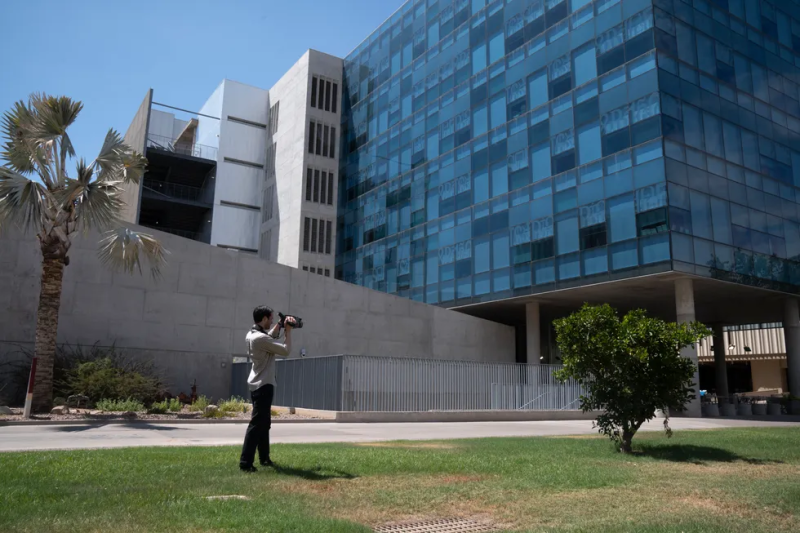
In the sun, in the shade, on a rock, in a glade
For every different way there is to experience heat — in the sun, in the shade, on a rock, in a glade — there is a scientific debate about how to correctly measure and assess it. And there are myriad ways to mis-measure and misrepresent heat, which can lead to confusion and inaction when it comes to addressing its deadly risks.
David Sailor has made it his life's work to parse these vagaries of heat. A professor in and director of Arizona State University's School of Geographical Sciences and Urban Planning, he oversees several graduate students focused on heat research and directs the new U.S. Department of Energy-funded Southwest Integrated Field Laboratory collaboration to study heat across the southwest using many different tools.
Sailor thinks, maybe more than anybody, about how measurements of expanding urban heat can be misleading, and about what can be done to correct that toward finding better heat solutions.
Momentary cloud cover can influence an air temperature reading, he notes. Knowing how long a patch of concrete has been in the shade can be important when taking surface temperature readings. So can considering what lies below that concrete, whether it's more layers of dense, heat-trapping material or a gap of air to the next level in a parking garage.
It's also important to understand that air temperatures are strongly but not entirely correlated with surface temps, Sailor says. And be wary getting him started on the heat absorption and radiation capacities of various urban materials.
"Let's say you're in a street canyon (lined by tall buildings) next to, let's say a brick building, and the brick building is facing south, so you're on the north side of the street," Sailor postulates while standing at the white board in his office. "Let's say the entire day long, the sun is heating up that brick façade. And bricks have good thermal mass, so they store a lot of that heat. If you sleep on that sidewalk that night, that brick wall will be radiating its own heat out at you to make you feel hotter than if you were out exposed to the same air temperature, but say, in an open park area or something."
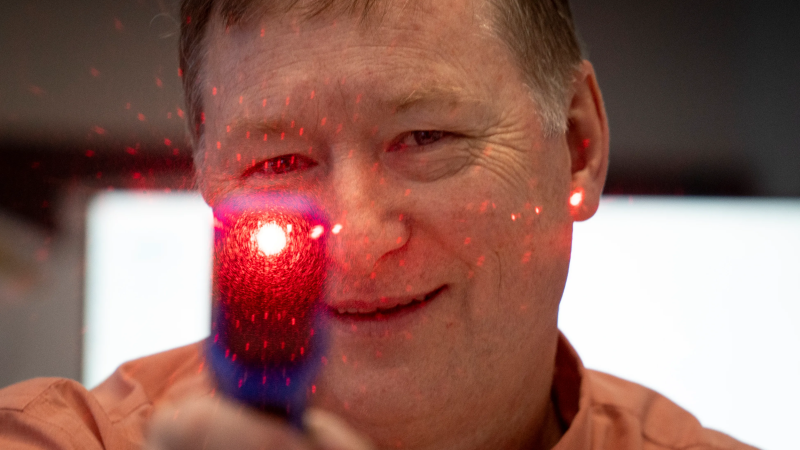
The appropriate method for recording the relevant heat index of any given square of sidewalk, this lesson suggests, depends on whether you want to estimate how it might be experienced by someone sleeping overnight on its surface, by a child playing in the morning shade or by an adult standing 6 feet tall in the midday sun.
A temperature reading at that square of sidewalk can also differ depending on whether it is located along an east-west oriented road or a north-south oriented avenue, is adjacent to black asphalt, tan-colored cool pavement or grass or is wedged between two skyscrapers with mirrored windows versus being exposed to airflow between two well-hydrated shade trees.
The measurement tool should also match whether the heat context is more about air or surface temperatures, and be calibrated accordingly. Sailor draws an equation on his white board that encapsulates the problem of simple tools like handheld infrared thermometer guns being used to communicate information about surface temperatures, as he notes was the case in a flawed news report he saw published last year.
"This gun is not actually measuring surface temperature," he says. "It's measuring the emitted thermal radiation, which varies based on material properties. It then interprets that as a surface temperature."
The gun is programmed to make this calculation based on a default “emissivity” setting of 0.95, meaning it assumes the surface being assessed is emitting 95% of the maximum possible for the given surface temperature. Many urban surfaces, like smooth glass, do have emissivity values near 0.95. But for others, some accuracy will be lost with that assumption.
Concrete, for example, is rated at 0.85, brick can range between 0.73 and 0.93 depending on its composition, and bare metals like brass can have emissivity values as low as 0.03. Using this gun set at 0.95 to read surface temperatures of those materials may result in underestimates, where the gun's reading makes a surface appear cooler than it actually is.
That's all to say, Sailor explains, that using certain cheap tools without adjusting the settings for different surfaces can lead to heat measurement errors. He starts walking around his office with The Republic's $30 Kobalt infrared thermometer gun.
His office has been at 78 degrees all day and has no major source of heat, Sailor says. So theoretically, without the factor of emissivity at play, every surface he scans with the tool should yield a similar reading. Yet, as he points the laser at walls, tables, chairs and keyboards, the gun reads out numbers from 75 to 77 degrees.
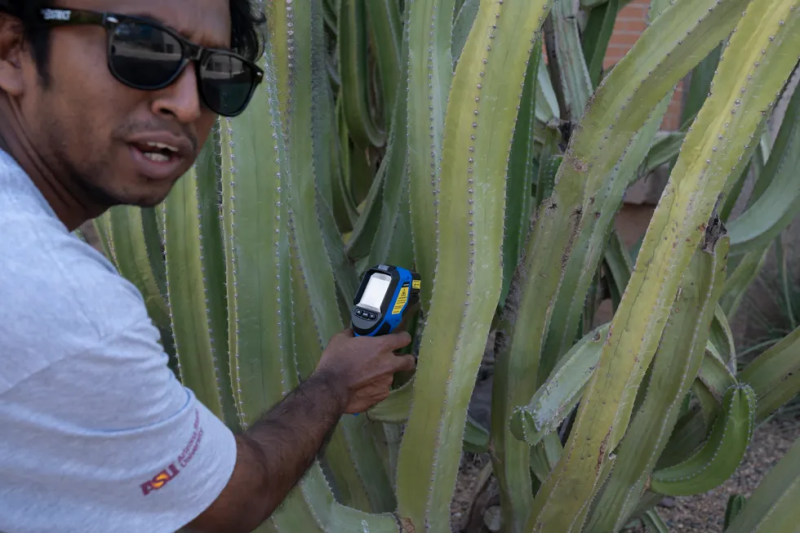
'Heat is a multifaceted challenge'
To people who do not identify as heat nerds, a difference of 2 degrees may not seem like a big deal. But Sailor is involved in developing real-world heat solutions where it's important to avoid scaling up any known errors. One of the projects he is currently working on with city staff in Phoenix involves the surprisingly contentious cooling strategy of covering dark asphalt with a light-colored coating.
Dave Hondula, who directs Phoenix's Office of Heat Response and Mitigation and was formerly a heat researcher at ASU himself, fielded questions from reporters at a press conference during last year's record-breaking heat wave about when and where cool pavement is actually cooling. As more Phoenix residents die from heat-related causes on the streets or head to the emergency room with contact burns after falling onto scorching pavement each summer, this question has become a public health concern.
"We are analyzing with our research partners at ASU to understand exactly how cool pavement is impacting environmental conditions," Hondula told reporters. "The results, to me, clearly indicate that cool pavement is very effective at reducing surface temperature, (which) would be helpful for protecting your bare feet, your pet's bare feet on the streets. And if a person were to fall, they'd be much less likely to experience burns."
But these coated surfaces are cooler because they can be engineered to reflect a larger portion of solar radiation back into the atmosphere. This can result in lower surface temperatures and less heat retained in urban environments. But that solar energy has to go somewhere. Reflecting energy from sunlight back into the air can create urban heat tradeoffs and hotspots, where at certain hours pedestrians may end up exposed to heat from more angles than when walking on a darker surface.
"Air temperature is very difficult to measure in these real world situations," Hondula explained. "But a person who is directly on cool pavement, for example, in the middle of the street at noon, they would experience more thermal strain than a person who's on a traditional coating. This is where this idea of cool pavement being hotter comes from."
On top of the many instances of "it depends" complicating what might seem the simplest of weather phenomena, measurement equipment can also just fail if it gets too hot, as scientists trying to study air pollution at the University of Arizona found out in 2022.
All of this adds up to a need for more heat-specific data collection, with more precise tools wielded by more informed researchers. The future livability of Phoenix — and other increasingly hot cities — may depend on how well that knowledge can be merged with local, real-life wisdom and logistics, then translated into smarter, funded cooling solutions.
"It's first important to recognize that heat is a multifaceted challenge, which requires a basket of solutions," Hondula said. "It's clear that no single heat response or mitigation strategy can solve all parts of the problem."
More on climate change:The latest from Joan Meiners at The Arizona Republic, part of the USA TODAY Network
The taming of the tempest
Armed with those $30 Kobalt infrared thermometer guns and the knowledge that their results might be flawed, The Republic set out to field test and illustrate how readings can vary across Phoenix's urban environments.
If one avenue for solving accelerating heat extremes and their rising human and economic costs is for scientists to home in on how best to measure and conceptualize heat, another equally important intervention may be helping leaders and residents gain a better understanding of urban heat as a tempestuous force — made moodier still by human-caused climate change.
On Aug. 9, during one of the hottest weeks of the year in Phoenix, 13 reporters deployed across the metro area. Their mission? To experiment with pointing the red laser beam at different surfaces to see what range of temperature readings they registered, and then to all simultaneously take air and surface temperature readings from different areas at 2 p.m.
Air temperature results ranged from 101 degrees at Desert Sky Mall to 111 degrees at the Burnidge Soup Kitchen on Osborn Road, all at about the same moment in urban environments within the valley. This tracks with The Republic's previous reporting on temperature disparities between higher income neighborhoods with more greenery and lower-income areas with less shade and more industry.
But contrary to common lore about greenery and water always being cooling, the reporters at the Hance Park Dog Park (107 degrees) and Tempe Town Lake (109 degrees) recorded some of the highest air temperatures. This aligns with Sailor's research on the counterintuitive effect lakes can sometimes have on urban heat.
Surface temperatures were even more scattered and surprising. At Desert Sky Mall, the location of the lowest air temperature reading, the reporter's infrared gun registered the highest of all the surface readings, on pavement, at 171 degrees. Another reporter measured 156 degrees on asphalt at Burton Barr Library Respite Center at 2 p.m., while a third reported an unsheltered green at Encanto Golf Course at 138 degrees and a fourth found a semi-sheltered bus bench on South Alma School Road to measure 120 degrees.
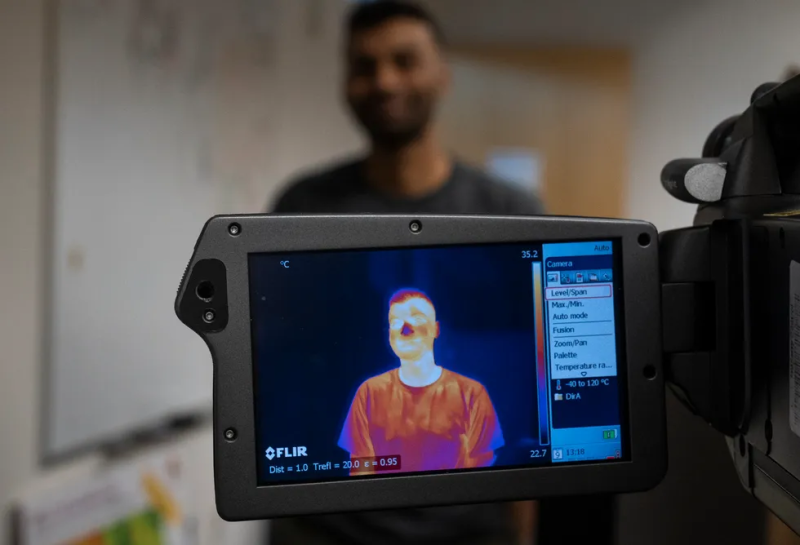
At the same moment, the ASU urban heat team was walking around on the exposed concrete outside their offices at Coor Hall in Tempe with their advanced heat monitoring gear. Eli Martin, a field technician working for Sailor, pointed a $25,000 infrared camera at a patch of shaded concrete and got a reading of 88.7 degrees. When he shifted the viewfinder to an adjacent patch of concrete in the sun, it read at 137.6.
Infrared cameras, which Sailor said can be purchased for as little as $7,000, are especially useful for heat scientists because they allow researchers to save images with pixelated temperature data for later analysis. They take this camera up in helicopters to capture big-picture data about how urban heat varies across the valley, from the bare rock of South Mountain to the black asphalt downtown to the cool-coated pavement already applied in some neighborhoods. It's so sensitive, Sailor noted, that when experimenting with using it indoors they can sometimes see where insulation is missing in walls or which vacant chairs recently hosted a warm body.
Nearby, Sina Sedaghat, another Ph.D student of Sailor's, used the lab's $50,000 reflectometer to measure thermal emittance. For a spot of concrete in the sun, it showed a value of 0.26. An adjacent spot of concrete emitted at 0.22.
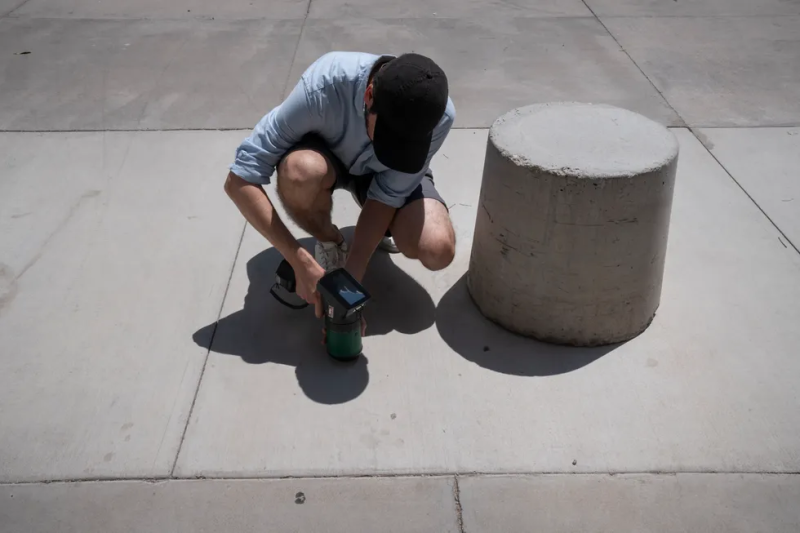
Just before 2 p.m., Ph.D. student Alamin Molla aimed The Republic's infrared thermometer gun at a patch of grass (124 degrees in the sun, 116 in the shade), then at a metal manhole cover (173 degrees in the sun, 138 in the shade), then at concrete near where Martin was using the infrared camera (163 degrees in the sun, 138 in the shade). Sailor pointed out that making sure the cone of infrared laser beams doesn't cross multiple surfaces and is not too far away or too close to what is being measured could also make a difference.
Observing that Molla's measurements show the grass in the sun is cooler than the concrete in the shade, the scientists launched into a discussion about how to allocate limited water in a desert city toward incorporating evaporative cooling and the psychological benefits of visible vegetation, which Sailor said have been shown to help hospital patients recover quicker after the same surgery. The general consensus was that "it's complicated."
"In hot desert climates, we have to factor in the impact of water stress," said Deepak Amaripadath, a postdoctoral researcher working with Sailor. "We need more studies to see which strategies are most beneficial to reduce surface temperatures."
Sailor mused that he ponders the urban heat consequences of different surfaces while walking his dog, a shepherd mix named Maya, at night. If one thing is clear after this brief journey into the center of the universe of temperature data complexity, it's that this team of weather wranglers thinks deeply at all times about heat.
Joan Meiners is the climate news and storytelling reporter at The Arizona Republic and azcentral.com, part of the USA TODAY Network. Before becoming a journalist, she completed a doctorate in ecology. Follow Joan on Twitter at @beecycles or email her at joan.meiners@arizonarepublic.com.
One week in the Phoenix heat:Living and dying in America’s hottest big city
When heat hurts:ER doctors treat heatstroke, contact burns on Phoenix's hottest days
'Hotter than it's ever been':How this 93-year-old copes with Phoenix's 100-degree heat
Disclaimer: The copyright of this article belongs to the original author. Reposting this article is solely for the purpose of information dissemination and does not constitute any investment advice. If there is any infringement, please contact us immediately. We will make corrections or deletions as necessary. Thank you.






